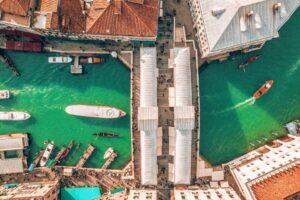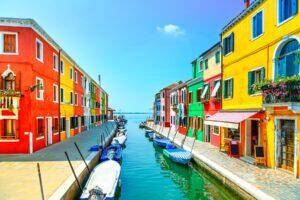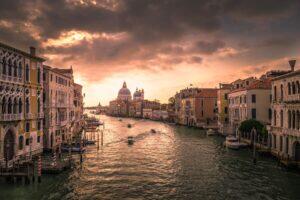Fodor's Expert Review Festa della Sensa
The oldest Venetian festival, the Festival of the Ascension, was initiated by Doge Pietro Orseolo II in the year 1000, after he led the Venetian fleet to victory over the Slavic pirates (who had invaded the Istrian-Dalamatian coast) on Ascension Day. Originally the Ascension was a very simple ceremony in which the doge led a procession of boats to the entrance of the port of San Nicolò di Lido to meet the religious leader of the period, the bishop of San Pietro di Castello, who blessed the waters as a sign of peace and gratitude.
In the days of the Republic, the Ascension began with a series of performances and celebrations that went on for 15 days and culminated with a large fair in Piazza San Marco. Today the Ascension is held on the Sunday following Ascension Day, the Thursday that falls 40 days after Easter, and begins at about 9 am with a procession of Venetian-oared boats led by the mayor in the Serenissima, who tosses a ring into the water and pronounces the... READ MORE
The oldest Venetian festival, the Festival of the Ascension, was initiated by Doge Pietro Orseolo II in the year 1000, after he led the Venetian fleet to victory over the Slavic pirates (who had invaded the Istrian-Dalamatian coast) on Ascension Day. Originally the Ascension was a very simple ceremony in which the doge led a procession of boats to the entrance of the port of San Nicolò di Lido to meet the religious leader of the period, the bishop of San Pietro di Castello, who blessed the waters as a sign of peace and gratitude.
In the days of the Republic, the Ascension began with a series of performances and celebrations that went on for 15 days and culminated with a large fair in Piazza San Marco. Today the Ascension is held on the Sunday following Ascension Day, the Thursday that falls 40 days after Easter, and begins at about 9 am with a procession of Venetian-oared boats led by the mayor in the Serenissima, who tosses a ring into the water and pronounces the ritual phrase "In segno di eterno dominio, noi, Doge di Venezia, ti sposiamo o mare!" (As a symbol of our eternal dominion, we wed you, o sea!). Masses in the Chiesa di San Nicolò and boat races follow later in the afternoon. In the Sala del Maggior Consiglio in Palazzo Ducale, you can see several objects that are part of the ceremony, such as the thick candle, the umbrella, the gilded throne, and the eight white, red, blue, and yellow banners. The Museo Storico Navale has an 18-foot-long scale model of the gilded boat once used by the doge.
READ LESS








